Agile methodologies have revolutionized modern project management, offering adaptive and flexible approaches to software development and beyond. Organizations across industries are increasingly adopting Agile to enhance efficiency, improve collaboration, and deliver high-quality products. However, Agile is not a one-size-fits-all solution. Within its broad philosophy, several frameworks provide structured methodologies to execute Agile principles effectively.
In this comprehensive guide, we will explore three of the most widely used Agile frameworks—Scrum, Kanban, and eXtreme Programming (XP). We’ll delve into their core concepts, strengths, use cases, and how to choose the right framework for your needs.
1. Scrum: The Sprint to Success
Core Concepts
Scrum is the most widely adopted Agile framework, designed around short, iterative cycles called sprints, typically lasting two to four weeks. Each sprint ensures regular inspection and adaptation to maximize product value.
Scrum defines three primary roles:
- Scrum Master: Facilitates the process and removes obstacles.
- Product Owner: Manages the product backlog and defines priorities.
- Development Team: Cross-functional team responsible for delivering the work.
Scrum follows a structured workflow, comprising key events:
- Sprint Planning: The team determines what can be delivered in the sprint.
- Daily Stand-up: A brief daily meeting for team members to sync up.
- Sprint Review: The team demonstrates the completed work to stakeholders.
- Sprint Retrospective: Reflects on what went well and what needs improvement.
Strengths of Scrum
✅ Predictable Delivery – Defined sprints bring a cadence to development, aiding planning. ✅ Increased Collaboration – Daily stand-ups and regular reviews enhance communication. ✅ Continuous Improvement – Sprint retrospectives ensure iterative process enhancement.
Common Use Cases
Scrum is ideal for projects with clear goals and a need for regular deliverables, making it a perfect choice for software development, marketing campaigns, and research projects.
2. Kanban: Flowing with Efficiency
Core Concepts
Kanban provides a visual approach to managing work, displaying tasks on a Kanban board with different stages such as ‘To Do,’ ‘In Progress,’ and ‘Done.’ Unlike Scrum, Kanban does not require fixed iterations but instead allows work to flow continuously.
Kanban follows these principles:
- Visualizing Workflow: A transparent board makes task progress clear.
- Limiting Work in Progress (WIP): Controls how many tasks are handled simultaneously.
- Managing Flow: Ensures smooth progress without bottlenecks.
- Making Process Policies Explicit: Establishes clear guidelines for workflow stages.
Strengths of Kanban
✅ Flexibility – Teams can dynamically adjust priorities without sprint constraints. ✅ Continuous Delivery – Work is released whenever completed, fostering efficiency. ✅ Efficiency Optimization – WIP limits prevent overload, ensuring smoother workflows.
Common Use Cases
Kanban is highly effective in customer support, maintenance projects, and content management, where tasks arrive unpredictably and require continuous attention.
3. eXtreme Programming (XP): Pushing the Limits of Agile
Core Concepts
XP is a software development methodology that emphasizes technical excellence and frequent iterations. It promotes:
- Test-Driven Development (TDD): Writing tests before coding ensures quality.
- Continuous Integration: Frequent merging of code to detect issues early.
- Frequent Releases: Small, frequent updates for better customer feedback.
XP principles include simplicity, communication, feedback, courage, and respect to drive collaboration and technical success.
Strengths of XP
✅ High-Quality Code – Test-driven development ensures reliability. ✅ Customer Collaboration – Continuous feedback improves satisfaction. ✅ Adaptability – Flexible approach to shifting requirements.
Common Use Cases
XP is highly effective in high-risk projects, startups, and innovation-driven software development, where rapid feedback and frequent iteration are crucial.
Choosing the Right Agile Framework
| Feature | Scrum | Kanban | XP |
|---|---|---|---|
| Iterations | Fixed sprints | Continuous flow | Short iterations |
| Workflow Structure | Time-boxed cycles | Task flow-driven | Iteration-based |
| Flexibility | Moderate | High | High |
| Collaboration Focus | High | Moderate | Very High |
| Ideal for | Complex projects | Continuous work | Software development |
Choosing the right Agile framework depends on your project’s nature. If you need structured development with defined sprints, go with Scrum. If your team requires a continuous workflow, Kanban is the best choice. And if technical excellence with extreme adaptability is crucial, XP is ideal.
Conclusion
Agile frameworks provide diverse approaches to project management, each offering unique advantages. Scrum’s structured sprints make it suitable for well-defined projects, Kanban’s continuous flow allows for flexibility, and XP’s rigorous technical practices ensure high-quality software.
Selecting the right framework depends on your team’s structure, project goals, and the nature of your work. Regardless of the framework chosen, embracing Agile principles—collaboration, adaptability, and continuous improvement—will set your team up for success.
Frequently Asked Questions (FAQ)
1. What is the difference between Agile and Scrum?
Agile is a broad philosophy that promotes iterative development, collaboration, and flexibility. Scrum is a specific framework within Agile that follows structured sprints and defined roles.
2. Can we combine multiple Agile frameworks?
Yes! Many organizations blend elements from Scrum, Kanban, and XP to create hybrid models tailored to their needs. For example, teams may use Scrum for development but apply Kanban for tracking support tickets.
3. Which Agile framework is best for small teams?
Kanban works well for small teams that need flexibility, while XP is ideal for small software teams prioritizing quality and rapid feedback.
4. How do we transition from traditional project management to Agile?
Start by adopting Agile principles incrementally, training your team, and choosing a framework like Scrum or Kanban to begin the transition.
5. Is Agile only for software development?
No! While Agile started in software, it is now widely used in marketing, education, healthcare, and manufacturing to improve efficiency and collaboration.
By understanding these frameworks, organizations can harness Agile’s potential, improve efficiency, and deliver higher-quality products faster. Ready to embrace Agile? Choose the framework that fits your team’s needs and start your Agile journey today!






